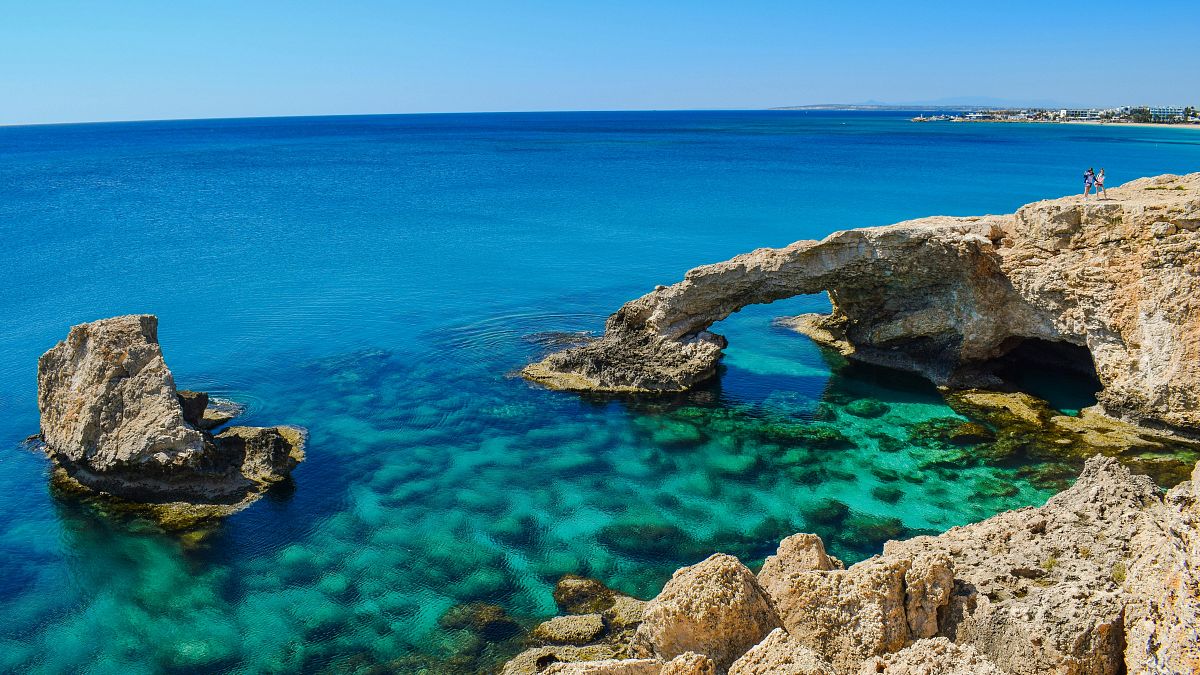Most of Europe’s bathing waters, ranging from the Atlantic to the Mediterranean, are of outstanding quality for swimming.
Heading to the beach or lake and taking a swim in the cool water is an essential part of going on holiday for many. But to save spending the rest of your hard-earned break sick, it’s good to know how clean the water you’re jumping into really is.
Most of the EU’s bathing spots are safe to swim in, according to the European Environment Agency.
There is some variation, however, depending on where you are and in what kind of water you decide to take a dip. The quality of water in seas and oceans is generally better than that of rivers and lakes, for example.
In 2023, around 89 per cent of coastal bathing waters within the EU were classified as excellent, compared with just under 79 per cent of landlocked bathing waters.
Which European countries have the best quality bathing water?
In 2023, 85 per cent of Europe’s reported 22,081 bathing waters were of excellent quality. Destinations like Cyprus, Austria, Croatia, and Greece lead the way with 95 per cent or more of bathing waters rated excellent.
However, destinations like Albania, Belgium, Estonia, Hungary, and Poland fell short, with less than 70 per cent of their bathing waters meeting this standard.
Overall, 96 per cent of all EU bathing waters met at least the minimum quality standard by the 2023 season, as required by the Bathing Water Directive (BWD).
The report highlights that the quality of Europe’s bathing water has improved because of good policies. Treatment and management have cut pollutants and pathogens, making once-polluted urban areas safe for swimming.
However, in some EU countries like Sweden, the Netherlands, Ireland, and Estonia, 3 per cent or more of bathing sites have poor quality. When a site is labelled poor, it’s closed for the next season meaning it isn’t safe to swim, and steps have to be taken to improve the situation.
How is bathing water rated and why does it matter for your health?
The EU follows the BWD to manage bathing areas across the bloc. They identify these areas, and their set bathing seasons then establish monitoring plans for coastal, transitional waters, rivers, and lakes. The directive doesn’t cover swimming or spa pools.
Polluted water can cause health issues if swallowed, like stomach upsets and diarrhoea. It can also lead to infections in the ears, eyes, and respiratory tract, and sometimes more serious diseases.
Authorities regularly test bathing waters for bacteria like E. coli and intestinal enterococci, which indicate sewage and manure pollution. Based on the bacteria levels, water quality is classified as ’excellent, ’ ’good,’ ’sufficient, ’ or ’poor. ’
Will you soon be able to swim in the Seine?
In 2015, Paris launched a plan to prepare the Seine for swimming by the 2024 Olympics, investing €1.4 billion in the project. By 2025, after the games, Parisians will have access to swimming areas along the Seine at Bras Marie, Bras de Grenelle, and Bercy.
As of now, structural works in Paris and the metropolitan area have been completed. This included upgrading wastewater treatment plants with disinfection units and unveiling a significant infrastructure piece: the Austerlitz rainwater storage basin, with a capacity equivalent to 20 Olympic swimming pools.

